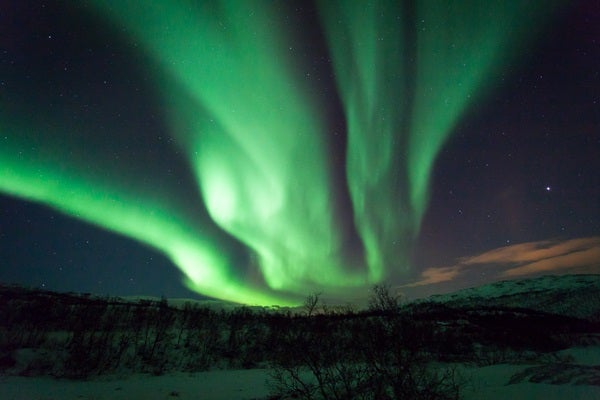But first, let me backtrack a bit. The Messier marathon is a noble activity — a true rite of passage for the backyard astronomer. It combines a tour of some of the finest deep-sky sights with a trip back in time to the galaxies of the Coma-Virgo Cluster, nearly 60 million light-years away. If you haven’t already “run” a Messier marathon, I urge you to give it a try. Or check out Michael Bakich’s “Run a non-Messier marathon” on p. 58. If you seek something different, the double star marathon is now an option.
I’m not the first to come up with the idea. Four years ago, Matt Wedel, assistant professor of anatomy at Western Univ-ersity of Health Sciences in Pomona, California, and the author of the must-read astro-blog “10 Minute Astronomy” (www.10minuteastronomy.wordpress.com), proposed the idea. Plotting the 100 entries in the Astronomical League’s (AL) double star program onto a sky chart, he noticed that 99 of them followed the distribution of the Messier objects and, therefore, could be captured during a Messier marathon.
Because the Messier marathon includes 109 deep-sky objects — a reasonable number of targets for an all-night session — I thought a marathon devoted to double stars should match that list. Because there is no double star catalog with a similar number of entries, I took Wedel’s lead and began with the AL list (www.astroleague.org/files/obsclubs/DblStar/dblstar2.pdf).
I eliminated pairs in the atmospherically turbulent “twilight zones” (western evening and eastern morning skies), dropped a few wide ones, and then added noteworthy doubles not on the AL list. For these extras, I consulted the Saguaro Astronomy Club’s list of the best double stars (www.saguaroastro.org/content/BEST-MULTIPLE-STARS.htm) and the “Table of Coloured Double Stars” in the Royal Astronomical Society of Canada’s Observer’s Handbook.
Small-scope observers will appreciate the fact that virtually all of these marathon doubles can be split with a 2.4-inch scope and a magnification of 100x. In fact, I’ve notched each with a 3-inch f/10 reflector using powers of 60x and 120x.
“In a Messier marathon,” Wedel notes, “the seeing isn’t that crucial because you’re observing big, extended objects, and just trying to log them, not necessarily tease out details. But to split some of the tighter double stars requires reasonably good seeing, and there’s no way to predict that in advance, sometimes not even from early evening to midnight or midnight to dawn. So the Messier marathon has a tighter constraint from the Moon, but it’s predictable, whereas the one sky condition that could make or break a double star marathon can’t be predicted in advance.”
When Messier compiled his catalog, it wasn’t to showcase the finest deep-sky objects. He simply wanted to note the locations of the hazy-looking sky objects that kept tripping him up during comet searches.
The roster for the double star marathon, on the other hand, was purposely created to spotlight the finest stellar partnerships visible this time of year. It’s certainly subject to second-guessing.
This is where you come in. No one, me included, has yet attempted the double star marathon. This is a trial run. Unlike the Messier marathon, a list pretty much etched in stone, I’m willing to tweak this one. If you’re blessed with a pioneering spirit and would like to give the double star marathon a try, drop me an email and I’ll send you the list (in Word format). Once you’re done, email me a report that includes the number you observed and suggestions (if any) for changes. I’ll publish the results next year.
Questions, comments, or suggestions? Email me at gchaple@hotmail.com. Next month: A showpiece binary star and a hidden diamond. Clear Skies!


![Ras Algethi (Alpha [α] Herculis) is a binary you’ll encounter in the Double Star marathon.](https://www.astronomy.com/wp-content/uploads/sites/2/2023/02/RasAlgethi.jpg?resize=600%2C473)








